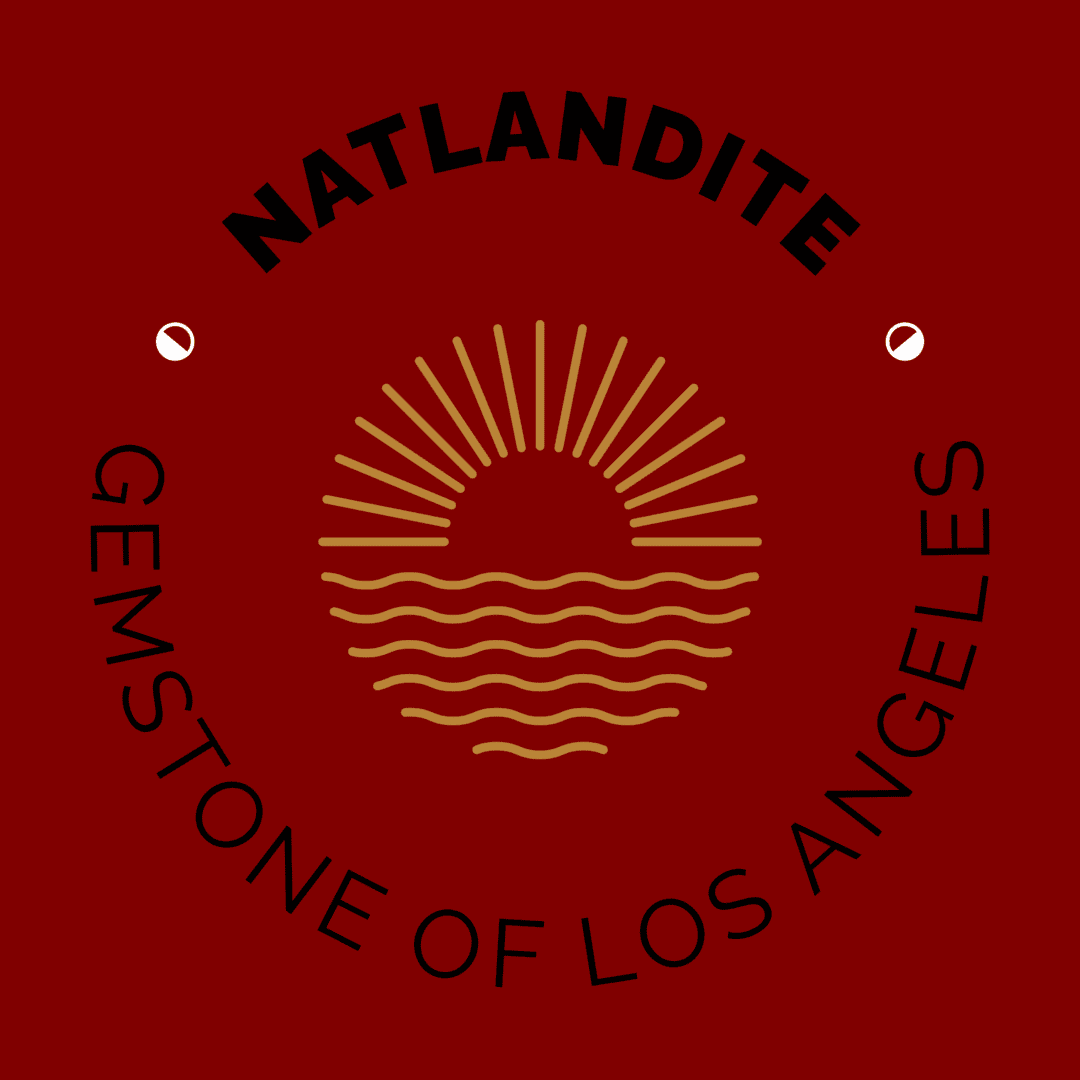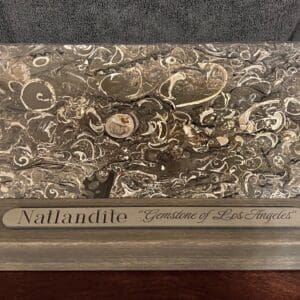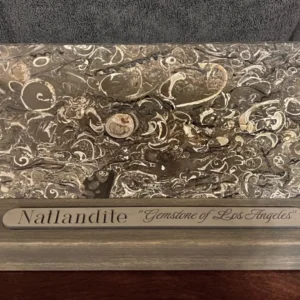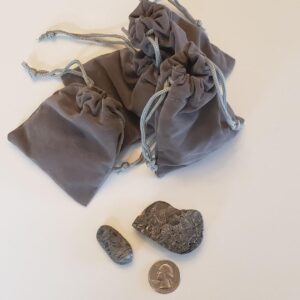NATLANDITE
Once in a great while a stone is discovered which possesses the essential requirements for preciousness, those being; scarcity, beauty, and hardness, plus a fourth dimension, historical significance. In the 1969-1970 period such a stone was unearthed during the excavation for the Atlantic Richfield (ARCO) Plaza at 6th and Flower Streets, Los Angeles, California. The occurrence of a strange protruding seam of fossilized stone (Fossilstone) in the southeast corner of the ARCO Plaza excavation caught the inquisitive eye of one Dr. Manley Leonard Natland, a retired Geologist from the Richfield Oil Company. Dr. Natland worked in the ornately decorated Richfield building which stood at 6th and Flower Streets before it was torn down to make way for the ARCO Plaza project. His keen interest in the Fossilstone was acquired by the accidental surfacing of a chunk from an exploratory drill hole some 15 years prior. This find, coupled with some quick and alert action saved the Fossilstone from the dump. Dr. Natland and his eldest son James Preston Natland, a graduate of the Colorado School of Mines, combined their talents for directing efforts to quarry, transport, store, ocean freight, design, manufacture, and market the Fossilstone into elaborate table tops, accessories of all kinds, and jewelry products. The Henraux Marble and Granite Company in Querceta, Italy, and E. T. O. CA. in Florence, Italy, were selected as the manufacturers. The best of Italian craftsmanship machined and handcrafted the Fossilstone into delicate and decorative stone products.
The strange occurrence of the seam of Fossilstone is of special interest to Geologists. It has been suggested by them that about 4 million years ago the ancient shoreline of the Pacific Ocean was up against the Santa Monica Mountains, some 4 miles north of the downtown Los Angeles area. A catastrophic event occurred in this area, possibly an earthquake along the still active Raymond Hill Fault unleashed a section of this ancient shoreline/lagoonal material, and sent it sliding down the incline of the sea floor to deeper more quiescent waters. Here the submarine slide came to rest, and was subsequently buried by the normal deep water silt and mudstone sediments upon which the slide material also rested. Through the passage of time or by some unknown action, the fossil shells, rocks of all types and sizes, and the fine silt/mudstone matrix into which the above material was immersed, became cemented together by a fine calcium deposit. As a result, the slide material became a very hard and durable stone.
The Fossilstone seam exposed by the ARCO Plaza excavation was approximately 3 feet in thickness at its widest point, 100 feet in lateral extent, and dipped southeastwardly at 27 degrees to an unknown depth. This deposit represents the world’s known supply. The remarkable feature of this event was the complete preservation of an ancient lagoonal deposit in mint condition. The stone is now formally named Natlandite after the founder and developer Dr. Manley L. Natland. From this stone approximately 1000 Natland Tables, 4000 Natland Accessories, and a limited number of Natland Jewelry have been produced.
Natlandite is a semi-precious stone, uniquely distinct from marble, and is defined as a mineral composite consisting of unaltered shells and rocks of all types and sizes embedded into a matrix of silt/mudstone, and all of this cemented together into a hard durable stone by a fine calcium deposit. Natlandite possesses the highest density of fossil shells in the world. Shell and mineral detail is exhibited even on the microscopic scale (foraminifera, diatoms, etc.). Permanent exhibits of Natlandite products can be found at the Los Angeles County Museum of Natural History, Exposition Park, Los Angeles, California; Natland Associates, 333 Weymouth Place, Laguna Beach, California; Colorado School of Mines, Golden, Colorado; and the Geological Society of America Headquarters, Boulder, Colorado.
A complete account of the Natlandite history from discovery to product development can be found in the April 18, 1971 issue of the West Magazine, Los Angeles Times, Sunday edition, entitled “Miracle of 6th and Flower.”
Further information about Natlandite and how to acquire Natlandite products can be obtained by writing Natland Associates, 333 Weymouth Place, Laguna Beach, California 92651, or phone (714) 494-5331.
Copyright © 1974 by James Preston Natland
Printed in the United States of America
All rights reserved. This document or parts thereof, may not be reproduced in any form
without written permission by the Author.





